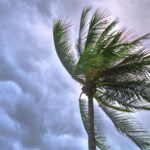A cool breeze often causes feelings of joy and peace among many people, but for some others, windy conditions can be the source of intense anxiety. Wind anxiety, also known as ancraophobia or anemophobia, is a unique form of fear and a lesser-known phobia that can significantly impact one’s daily life. In this article, we’ll be looking at ancraophobia in-depth, trying to understand its causes and potential treatments.
Understanding Ancraophobia: The Fear of Wind
Ancraophobia is a subtype of specific phobia that is characterized by an irrational fear of wind or windy conditions. This kind of fear is relatively uncommon, but it can have a significant negative impact on the lives of those who suffer from it. People suffering from ancraophobia are likely to experience symptoms such as increased heartbeat, shortness of breath, and an overwhelming sense of dread when exposed to windy conditions. In extreme cases, they may even be at risk of having a panic attack.
People suffering from wind anxiety may prefer to stay indoors and keep the doors and windows closed to avoid exposure to strong winds. Some common triggers for ancraophobia include:
- Seeing trees swaying, leaves whirling, or other visual cues of windy weather
- Merely thinking about windy conditions, upcoming storms, or the loud sounds of wind blowing
- A weather forecast about potential storm or windy conditions
Why Do Some People Fear Winds?
Many times, ancraophobia is not about the wind itself, but some people fear the damage that strong wind or a storm might cause. They might worry about the financial losses that they might face in the event of a storm; some even fear that a strong wind might cause damage to their homes. Strong winds are also likely to cause damage to nearby surroundings; thus some people are scared that windy conditions might lead to them or their loved ones getting injured.
Causes of Ancraophobia
Like most phobias, the exact cause of ancraophobia is unknown. However, both environmental and genetic factors play a crucial role in its development. People whose family has a history of anxiety or phobia are more likely to develop ancraophobia. It might also be a result of undergoing traumatic experiences related to storms or winds during childhood.
Ways to Overcome Wind Anxiety
Dealing with ancraophobia may be challenging, but there are measures you can implement to effectively manage symptoms and enhance your quality of life.
-
Educate Yourself
Try to understand ancraophobia in-depth as far as possible. Also, observe yourself and find triggers for your wind anxiety. Do you feel anxious due to the wind all the time or there are only specific instances? Apart from this, learning about the weather and the rarity of extreme weather events such as storms can help reduce fear.
-
Stay Informed About the Weather
Stay updated about weather conditions using reliable weather apps. Having access to real-time information allows you to prepare for windy days, reducing the element of surprise and providing a sense of control.
-
Gradual Exposure
Exposure therapy has been effective in the treatment of multiple phobias. Thus, gradual exposure to windy conditions in a controlled environment can help in reducing wind anxiety. Start with mild breezes and gradually increase exposure as comfort levels improve.
-
Seek Support
Share your feelings with friends, family, or a mental health professional. Discussing your wind anxiety can provide emotional support and different perspectives.
-
CBT
CBT can help challenge and change the irrational thoughts that might be causing the wind anxiety.
-
Breathing and Relaxation
Practice deep breathing exercises to calm the nervous system during windy moments. Focusing on slow, intentional breaths can counteract the physiological symptoms of anxiety.\
Conclusion
Ancraophobia, a fear of winds is relatively uncommon, yet it can have a significant negative impact on the lives of people suffering from it. One can overcome ancraophobia by educating themselves, identifying triggers and engaging in CBT and exposure therapy.
References:
- Ancraophobia (Fear of Wind). (n.d.). Psych Times. Retrieved January 16, 2024, from https://psychtimes.com/ancraophobia-fear-of-wind/
- Fear Of Wind & Drafts: Ancraophobia Causes & Treatments • Hello Minaste. (2023, January 25). https://hellominaste.com/fear-of-wind-drafts-ancraophobia/
- The Fear of Air is Real, and It’s Called Anemophobia. (n.d.). Verywell Mind. Retrieved January 16, 2024, from https://www.verywellmind.com/anemophobia-fear-of-air-2671730

